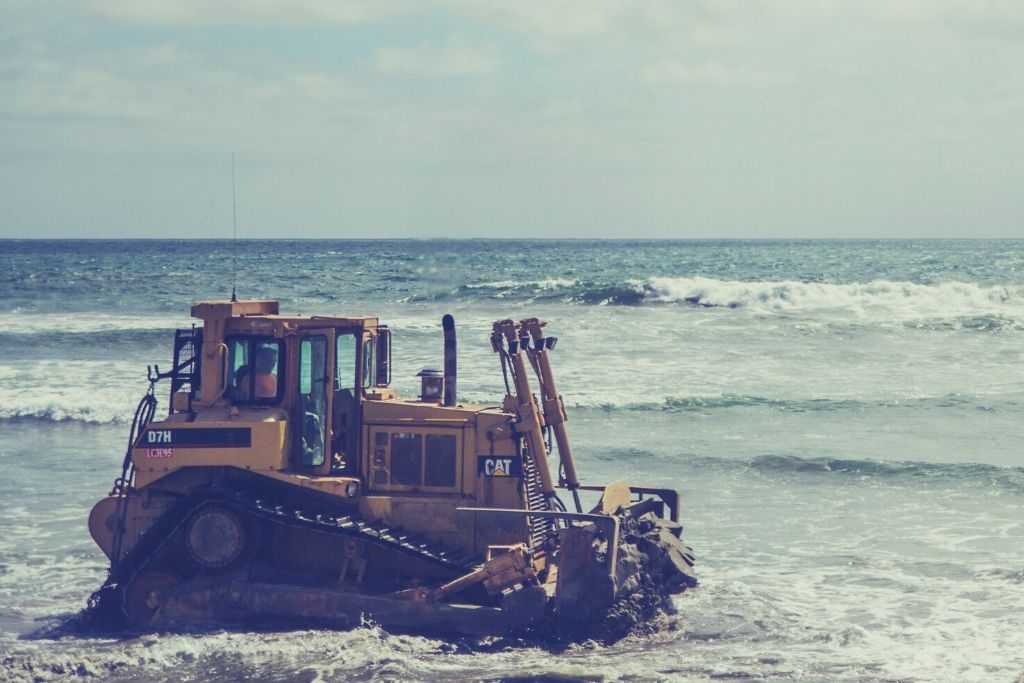As a resource-intensive industry, construction has a notoriously high environmental impact: According to some estimates, it accounts for up to 40 percent of the global carbon emissions. The sector is also a significant source of pollutants. The World Bank states that the construction waste will increase by 70 percent by 2050 unless there’s urgent action.
It is also one of the most water-intensive industries. From mixing the concrete to washing the equipment or wetting the dry surfaces, water is a crucial resource in all stages of the building process. And, despite its heavy dependence on it, construction causes more water pollution incidents than any other industry. Contaminated bodies of water such as rivers, lakes, reservoirs, or seas, pose some of the biggest global health issues.
Celebrating this year’s World Water Day, we identified three ways construction sites can minimize their negative impact on the source of life.
1. Building Healthy Environments With Non-Toxic Materials
When construction projects utilize non-toxic and non-chemical materials, they not only pollute less but also create healthier and more pleasant environments for future occupants.
Mainly thanks to the rising interest in green buildings, there’s a proliferation of non-toxic building materials. These include anything from natural lumber, clay plaster, straw bales, and mortar.
Furthermore, during the construction process, site managers might opt to power the heavy machinery and excavators with clean energy. While diesel and oil are some of the worst offenders of water pollution, alternatives such as biodiesel and vegetable oil lower the risks of plaguing the aquatic life.
2. Disposing of the Construction Waste and Debris Properly

Across most of the advanced and emerging economies, there are strict rules about disposing of the construction waste by now. Not adhering to these regulations will often have legal consequences.
However, even if the site managers follow these regulations, much of the construction waste and debris still end up in industrial landfills, with hazardous materials risking water safety.
To prevent the pollutants from getting in touch with waterways, site managers must have a holistic and detail-oriented approach at all stages of the construction. Some of these precautions include sorting the waste and taking them to appropriate disposal centers, securing all the chemicals to avoid spillage, and conducting the chemical-heavy jobs away from bodies of water.
3. Educating Site Managers About Controlling Soil Erosion
The top layer of the soil has the highest level biological activity, containing much of the organic matter and nutrients for the plants. This layer often acts as a natural filter. It helps to regulate the water flow, combat pests and diseases, while also keeping the land fertile.
However, some phases of construction, such as drilling and filling, drastically reduce the quality of the soil. If these sites aren’t protected, the soil erosion due to construction activities causes rock and sediment pollution. When these run into natural water sources and streams, they might irreversibly pollute these resources.
As the soil and natural habitat of each construction site are unique, there are numerous techniques to minimize the land disturbance and prevent soil erosion. Hence, responsible site managers must analyze and understand the risks of erosion at every site and keep up with the regional regulations.
Clean Water for Bright Futures
Along with the devastating environmental and public health consequences, mismanagement of water on construction sites can cause severe legal, economic, and reputational damage to companies. Once a problem as such occurs and a construction site pollutes the groundwater, it might be extremely difficult or impossible to reverse it.
Due to the rapid population rise and urbanization, the world needs to construct more than 2 billion buildings over the next 80 years. Hence, the construction sector has a more significant environmental responsibility than ever to maintain a cleaner planet and safe waterways.






